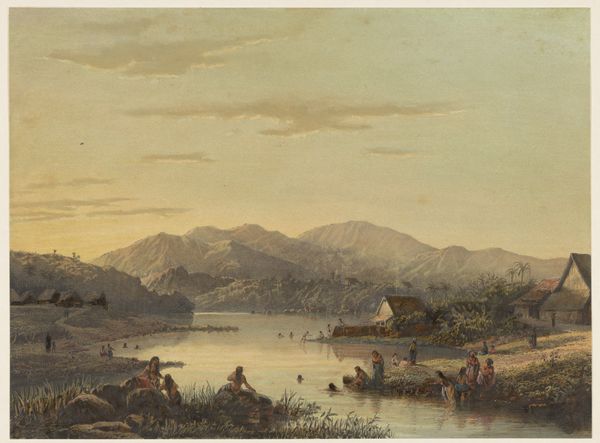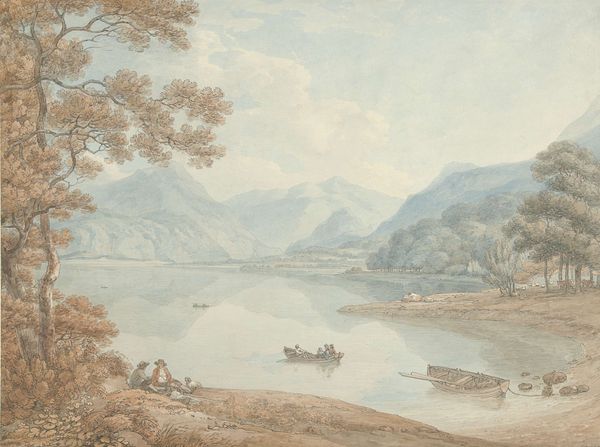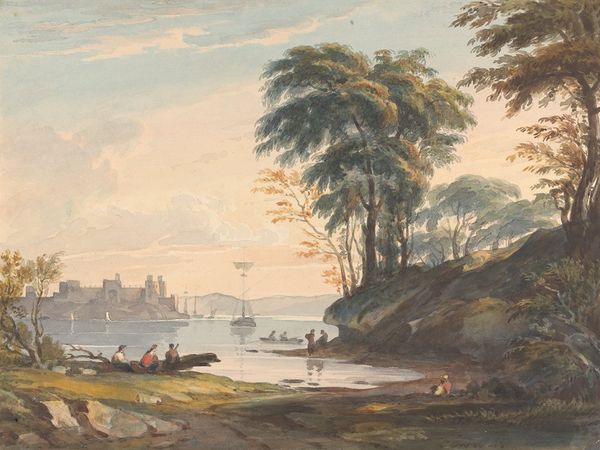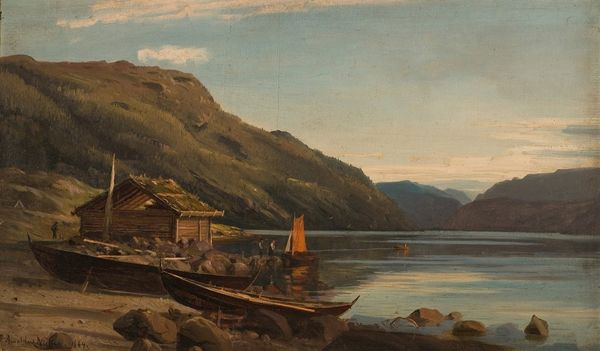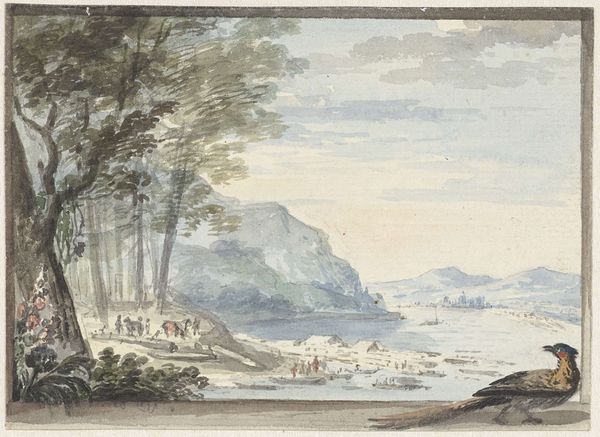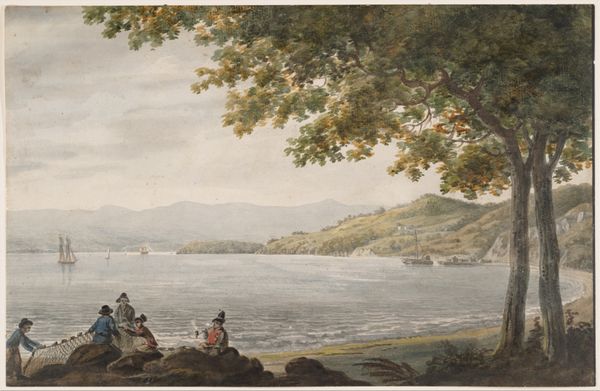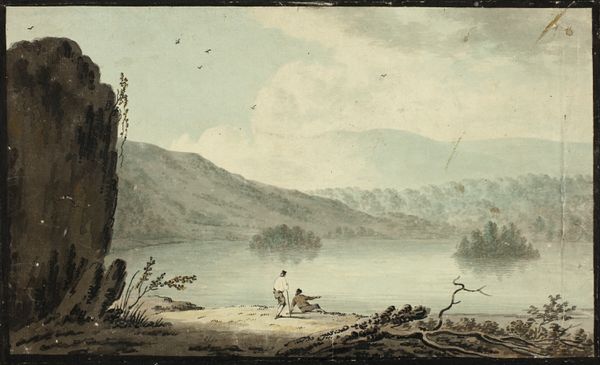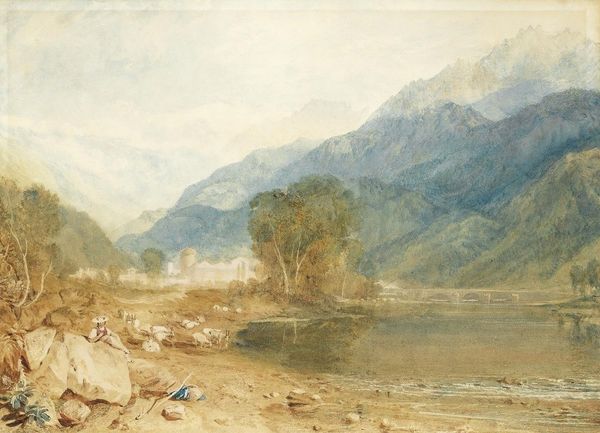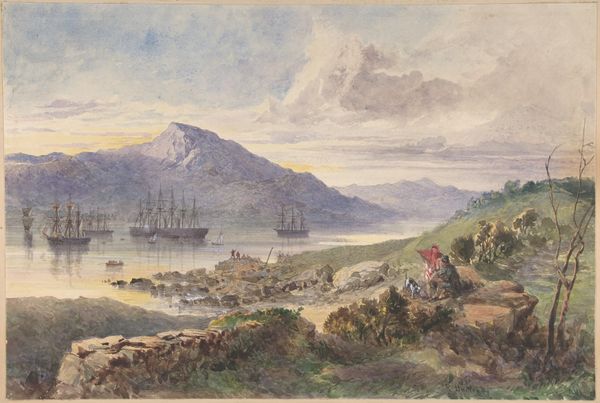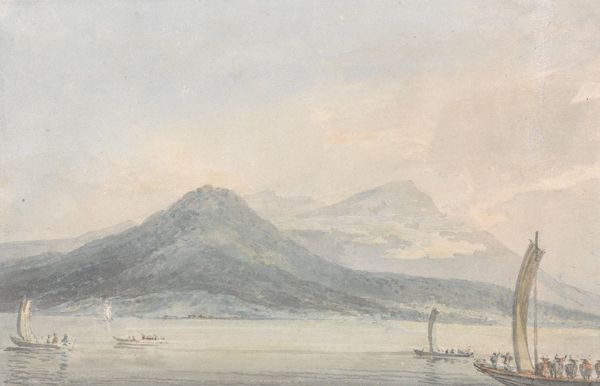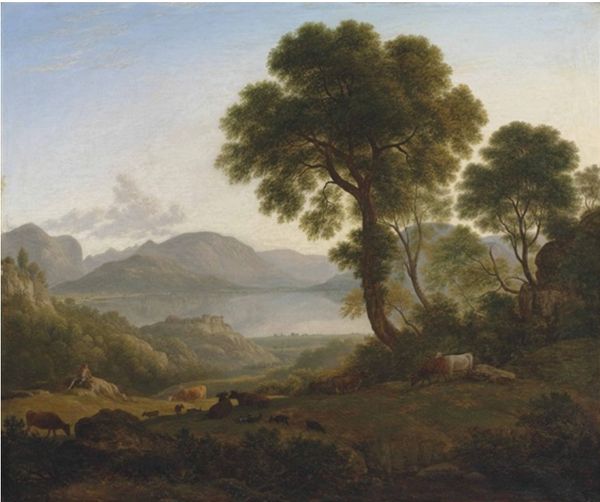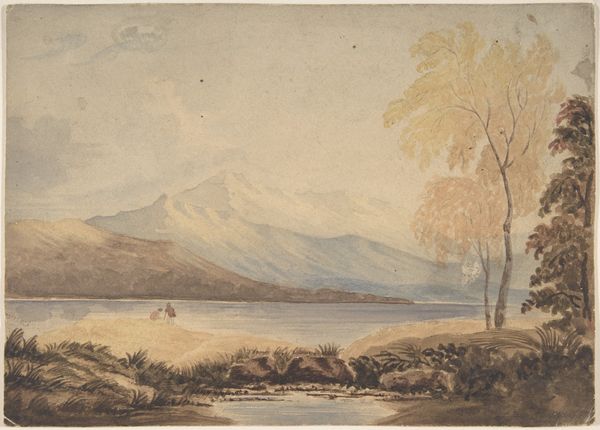
plein-air, watercolor
#
plein-air
#
landscape
#
charcoal drawing
#
watercolor
#
romanticism
#
watercolor
Copyright: Public Domain: Artvee
Editor: So here we have Turner’s "Lake Geneva and Mount Blanc," created between 1802 and 1805. It’s a watercolor and charcoal drawing, and my immediate reaction is to the idyllic quality. What strikes me, though, is the foreground, filled with such grounded details and common elements like cows and everyday people going for a swim. What do you see in this piece? Curator: For me, it's fascinating to consider the tension between the 'high art' subject of the sublime landscape—that imposing Mount Blanc in the background, and the quotidian reality depicted in the foreground. Note how Turner has laboured over depicting these cows, these working animals, present with a very direct materiality of their existence. Editor: So you are saying that the labor that produced the livestock on display are in juxtaposition to the romantic landscape that sits behind? Curator: Precisely. Romanticism is often interpreted in terms of individual genius and feeling, but we can see how even in these grandiose landscapes, economic realities of the time press upon the canvas. How are the materials he is using impacting the perception? Editor: Well, knowing that it is watercolor changes my reading because there's an immediacy in the way it's applied – less layering, more gestural quality, in stark contrast with oil paintings which require preparation and lengthy application. And then the addition of the charcoal? Curator: The addition of charcoal sketches another layer onto this, another signifier of industry, being that charcoal comes directly from burned trees. Consider Turner’s means, his market. Were these watercolors practice sketches? Was this piece designed as a smaller artwork available to an emerging middle class art consumer? Editor: It is a good reminder to reflect upon the ways in which the process of creation and economic circumstances shaped the artistic outcome. Thank you. Curator: Absolutely! I leave seeing the means behind the painting to consider my personal means in relationship with the economy and nature of the production, thank you.
Comments
No comments
Be the first to comment and join the conversation on the ultimate creative platform.
